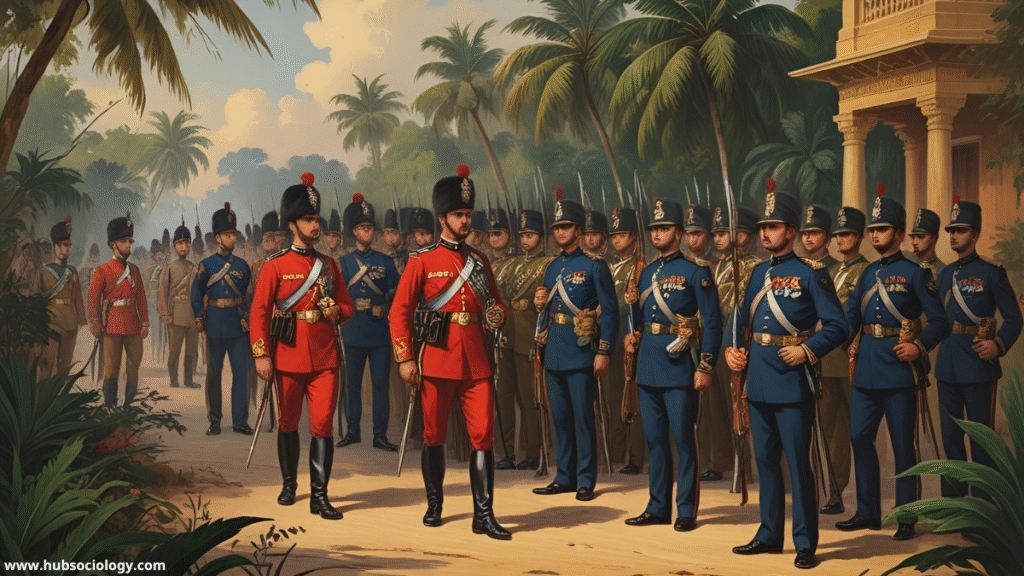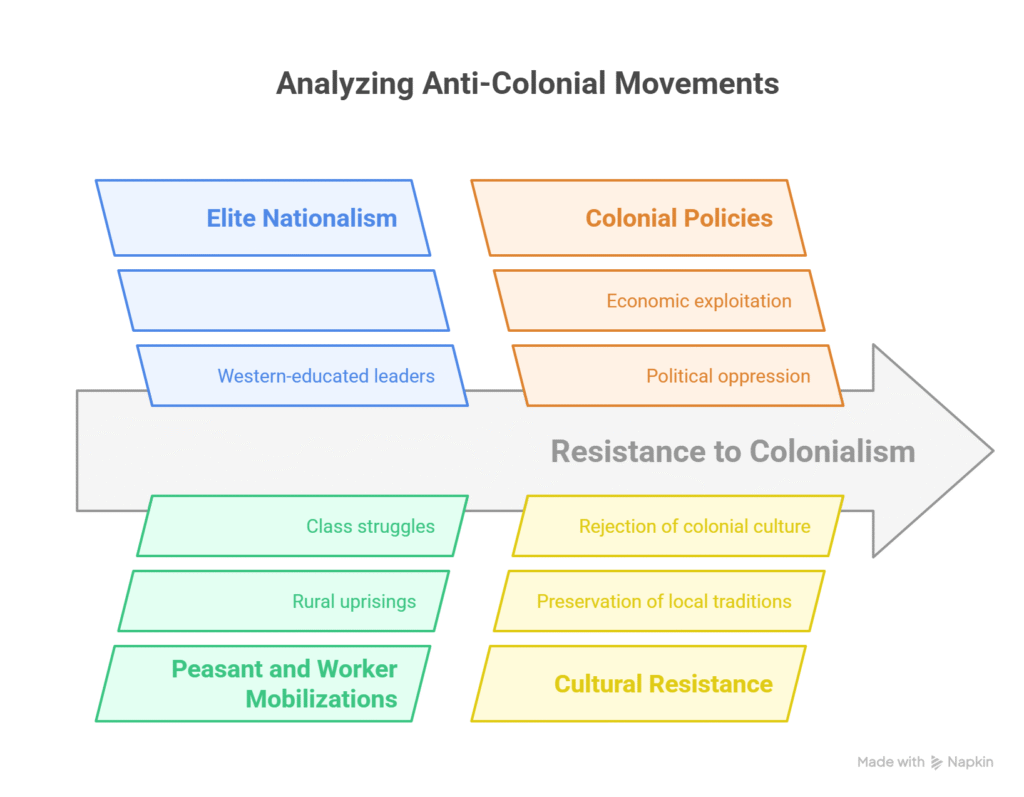Introduction
Colonialism has been one of the most transformative forces in shaping modern Asian societies. From the 16th to the 20th century, European powers—including the British, French, Dutch, Spanish, and later the Americans and Japanese—extended their dominance over vast regions of Asia. Colonialism had a significant sociological impact, reshaping social structures, political institutions, cultural identities, and economic systems. While colonial rule brought about modernization in some aspects, it also entrenched inequalities, disrupted traditional societies, and left lasting legacies that continue to influence contemporary Asian nations.
This article examines the sociological dimensions of colonialism in Asia, focusing on how colonial powers reconfigured social structures, introduced new economic systems, and imposed cultural changes. It also explores the post-colonial repercussions, including nationalism, identity formation, and persistent inequalities.

1. Colonialism and the Restructuring of Asian Societies
A. Economic Transformations
One of the most significant sociological impacts of colonialism was the restructuring of Asian economies to serve imperial interests. Colonial powers imposed extractive economic systems that prioritized resource exploitation and export-oriented production.
- Plantation Economies and Cash Crops: In South and Southeast Asia, colonial rulers replaced subsistence farming with cash-crop plantations (e.g., tea in India, rubber in Malaysia, sugar in the Philippines). This shift disrupted traditional agrarian systems, making local economies dependent on global markets.
- Deindustrialization: In India, British policies dismantled indigenous textile industries to favor British-manufactured goods, leading to deindustrialization and economic dependency.
- Labor Exploitation: Colonialism introduced coercive labor systems, including indentured servitude (e.g., Indian laborers in British colonies) and forced labor (e.g., the Dutch cultuurstelsel in Java).
These economic changes created new class structures, with a small elite collaborating with colonial rulers and a vast peasantry subjected to exploitation.
B. Political and Administrative Changes
Colonial empires frequently replaced traditional political institutions with centralized bureaucratic administrations to rule their territory.
- Divide and Rule Policies: The British in India and the Dutch in Indonesia exploited ethnic and religious divisions to maintain control, reinforcing social fragmentation.
- Legal and Administrative Systems: Colonial administrations introduced Western legal frameworks, land ownership laws, and census classifications that redefined social identities (e.g., caste in India, racial hierarchies in Southeast Asia).
These changes laid the groundwork for modern nation-states but also entrenched ethnic and religious tensions that persist today.
2. Social Stratification and Cultural Hegemony
A. Racial and Social Hierarchies
Colonialism introduced rigid racial hierarchies that privileged Europeans over native populations.
- White Supremacy: Europeans occupied the top of the social ladder, while mixed-race (Eurasian) and native elites served as intermediaries.
- Caste and Class Reinventions: In India, British census operations rigidified caste identities, while in Southeast Asia, colonial policies reinforced ethnic divisions (e.g., Chinese middlemen in British Malaya).
B. Cultural Domination and Hybridization

Colonialism imposed Western cultural norms while simultaneously suppressing indigenous traditions.
- Education and Language: Missionary schools and colonial education systems promoted European languages (English, French, Dutch) as markers of elite status.
- Religious Conversions: Christianity spread in the Philippines (Spanish rule) and parts of India, altering social and cultural landscapes.
- Cultural Syncretism: Hybrid cultures emerged, blending colonial and indigenous elements (e.g., mestizo cultures in Latin America and the Philippines).
However, cultural imperialism also led to resistance and nationalist revivals, as seen in the Bengal Renaissance and Islamic reform movements.
3. Resistance, Nationalism, and Post-Colonial Legacies
A. Anti-Colonial Movements
Colonialism generated resistance through rebellions (e.g., Sepoy Mutiny in India, Boxer Rebellion in China) and organized nationalist movements.
- Elite Nationalism: Western-educated elites (e.g., Gandhi, Sukarno, Ho Chi Minh) led independence struggles, often using colonial ideologies (liberalism, socialism) against the colonizers.
- Peasant and Worker Mobilizations: Rural uprisings (e.g., the Philippine Revolution, Telangana movement in India) highlighted class struggles under colonial rule.
B. Post-Colonial Challenges
After independence, Asian nations faced the challenge of decolonizing institutions while navigating modernization.
- Neocolonialism: Former colonies remained economically dependent on Western powers (e.g., trade imbalances, foreign debt).
- Nation-Building and Ethnic Conflicts: Colonial-era divisions led to post-independence conflicts (e.g., India-Pakistan partition, Sri Lankan civil war).
- Modernization vs. Tradition: Post-colonial states struggled to balance Western-style development with indigenous cultural values.

4. Conclusion: Colonialism’s Enduring Sociological Impact
Colonialism fundamentally reshaped Asian societies, embedding economic dependencies, social hierarchies, and cultural contradictions that persist today. While it introduced elements of modernization (infrastructure, education, legal systems), it did so through exploitation and domination. Post-colonial Asia continues to grapple with these legacies—whether in the form of economic inequality, ethnic tensions, or cultural identity crises.
From a sociological perspective, understanding colonialism is crucial for analyzing contemporary issues such as globalization, nationalism, and development in Asia. The colonial past is not merely history; it is a living force that continues to shape the region’s social dynamics.
Do you like this this Article ? You Can follow as on :-
Facebook – https://www.facebook.com/hubsociology
Whatsapp Channel – https://whatsapp.com/channel/0029Vb6D8vGKWEKpJpu5QP0O
Gmail – hubsociology@gmail.com
Topic Related Questions
5-Mark Questions (Short Answer Type)
- Define colonialism and explain its key features in the Asian context.
- How did the British economic policies lead to the deindustrialization of India?
- What was the impact of colonial land revenue systems on peasant societies in Asia?
- Explain the concept of “Divide and Rule” policy with an example from colonial Asia.
- How did colonial education systems influence social hierarchies in Asia?
- Briefly discuss the role of missionaries in colonial Asia.
- What were the main forms of labor exploitation under European colonialism in Asia?
- How did colonialism contribute to the rise of a new middle class in Asia?
- What was the significance of the Bengal Renaissance in colonial India?
- Name two anti-colonial movements in Southeast Asia and their leaders.
10-Mark Questions (Detailed Answer Type)
- Analyze the economic impact of colonialism on Asian societies with reference to plantation economies and cash crops.
- Discuss how colonialism restructured traditional social hierarchies in India or Indonesia.
- Examine the role of colonial legal and administrative systems in shaping modern Asian states.
- How did cultural hegemony operate under colonial rule? Discuss with examples.
- Compare and contrast the British and French colonial policies in Asia.
- Explain the emergence of nationalist movements in Asia as a response to colonialism.
- Discuss the impact of colonial urbanization on Asian societies.
- How did colonialism affect gender roles in Asian societies?
- Evaluate the role of the colonial census in reinforcing caste and ethnic identities in Asia.
- Why did some sections of Asian society collaborate with colonial rulers? Discuss with examples.
15-Mark Questions (Essay-Type/Long Answer)
- “Colonialism was not just a political domination but a complete restructuring of Asian societies.” Discuss this statement sociologically.
- Critically examine the long-term social and economic consequences of colonialism in South and Southeast Asia.
- How did colonialism contribute to the formation of modern nation-states in Asia? Discuss with examples.
- “Colonialism introduced modernity but at the cost of exploitation.” Evaluate this statement in the context of Asian societies.
- Analyze the role of anti-colonial resistance movements in shaping post-colonial Asia.
- Discuss the impact of colonial policies on ethnic and religious identities in Asia. Did these policies lead to post-colonial conflicts?
- How did colonialism influence the class structure in Asian societies? Compare two Asian countries.
- Examine the cultural transformations brought about by colonialism in Asia, including language, education, and religion.
- “The colonial state was a racialized state.” Discuss this statement with reference to colonial Asia.
- To what extent did colonialism shape the economic dependency of Asian nations even after independence?

1 thought on “Colonialism and the Making of Modern Asian Societies: A Sociological Perspective”